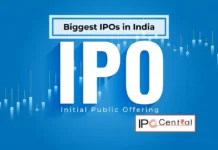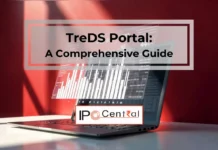It is easy to get swayed by a rising tide and get an impression that stock will continue to do well in future as well. This is especially true in the case of IPOs where the initial 50-100% pop may give a misplaced sense of security about a company and its business. However, stock markets seldom move in a linear fashion and this is why investors need to have an IPO exit strategy in place. Here are five important reasons why you need one:
#1 Expiration of lock-in period
There is usually a lock-in period for promoters and other insiders and once the relevant timeframe passes, insider selling may cause havoc in stock prices. IPO investors, especially the small retail investors, may not be ready for such volatility.
Promoters are usually required to offer 20% of the company’s post-offer equity share capital for a lock-in for a period of 3 years from the date of allotment.
In addition to this, the entire pre-offer capital of the company in question is locked-in for a period of 1 year from allotment.
Most IPO issuers nowadays rope-in anchor investors who also have a lock-in of 30 days from the date of allotment. This is the reason we pay special attention to the 6 week timeframe in our IPO performance reports as most of the selling pressure from anchor investors gets over in 6 weeks.
It may be counter intuitive to long term investing, but not be a bad idea to invest in IPOs with the sole objective of exiting with the listing gains. This IPO exit strategy is subject to some conditions and investors certainly need to know what they are getting into.
Read Also: 7 common IPO mistakes and how to avoid them
#2 Business realities change, thus IPO exit strategy
This is essentially an extension of the point above. What was true at the time of IPO may not be true later and you may not be tracking the business closely. Difficult to believe now but Reliance Power IPO was subscribed within minutes despite being one of the largest IPOs in India. It was heavily subscribed (73 times to be precise) but market conditions became hostile by the time shares were listed amid US subprime crisis. Subsequent developments were also not positive for the company and markets simply stopped caring afterwards.
Another example is test preparation company CL Educate which had a tepid listing in March 2017 but fundamentals worsened subsequently while investors also became increasingly wary of growing competition from online players. Within a year of listing, the stock lost 67.3% from IPO price.
Read Also: Laxmi Organics files DRHP for INR800 crore IPO
False moats can disappear pretty fast, especially when it comes to disruptions from online and digital spaces and as a result of regulatory changes. In some cases, moats in the areas of capital investment, distribution and network can be offset by a new technology and the erstwhile asset quickly becomes a liability. Thus, IPO exit strategy or criteria is perfectly valid if you notice any of these happening in your portfolio companies.
#3 You may be caught in multi-year structural cycles
Certain businesses are simply caught in multi-year bear cycles which may be structural as well. A good example is ICICI Securities which has witnessed the onslaught of online discount brokers such as Zerodha and Upstox in recent years. It was never in doubt that the stock broking business was to change fundamentally and profit margins will only go down amid the increasing popularity of online and discount brokers. As we outlined in this analysis of S Chand & Company, online and digital forces are too strong to be resisted.
Despite these negatives, shares were issued at P/E ratio of above 30. Interestingly, most equity analysts recommended investors to subscribe to the IPO. The company essentially used the IPO to transfer highly priced shares to retail investors. The result was that the stock price never went above the IPO price of INR520 per share and lost 54% within a year.
The example of CL Educate also falls in this category. Although the company presented poor results in the year following the listing, it has subsequently posted much better numbers. However, the market is no longer offering high valuations to test preparation players. CL Educate sold shares in IPO at a P/E ratio of 27.5 against the current multiple of just 6. CL Educate isn’t alone as the sector multiples have shrunk considerably and its competitors MT Educare and Career Point also trade at 12 and 7.7.
#4 Information asymmetry needs IPO exit strategy
Many investors’ primary grouse with IPOs is information asymmetry – a phenomenon that rests on the fact that company insiders have more knowledge about the operations while IPO investors are essentially outsiders. It creates an asymmetry in information among the two parties which makes IPO pricing almost always in favor of the seller.
Every IPO-bound company is required to file draft red herring prospectus (DRHP) disclosing vital details and performance on key operating metrics. These numbers are vetted by the company management as well as their auditors.
This gives a view that the financial figures are sacrosanct but that is far from reality. Time and again, we have seen companies and auditors trying to game the system and present fudged numbers. At times, the magnitude of this practice could be simply mind-numbing. Manpasand Beverages – which listed in 2015 and went on to almost double from IPO levels within a year – was found to have serious gaps in its corporate filings. Couple of years later, Manpasand management was found to be involved in a GST fraud, leaving the business worth a penny stock! Another solid reason to have a robust IPO exit strategy.
#5 Difficult to identify multibaggers at the onset
Just like some IPOs lead to disasters, few of them go on to become multibaggers. After all, pretty much every stalwart today started its stock market journey from an IPO!
Read Also: How to identify good IPOs
However, investors are often hard-pressed to identify such potential multibaggers at the IPO stage. Many of the traits of blue-chip stocks may be missing in the initial years post listing. As it happened in the case of Infosys, there were several instances which threatened the very existence of the company. One such deal failure had even prompted Ashok Arora – one of the co-founders – to part ways with Infosys.
At the same time, there are several examples of promising companies eventually going the other way. For every Avenue Supermarts (parent of D-Mart stores), there are several S Chand, Suzlon, and DLF.
Having a well-defined IPO exit strategy doesn’t mean that you can not reenter a stock exited earlier.
The above points are just some of the reasons why investors need to have a clear IPO exit strategy. This might be termed short-termism but no harm in taking some profits while you can and reinvesting the same in a new IPO instead of blindly punting on long term prospects.
In total, having a clear view of an IPO exit strategy helps investors in cutting losses, avoiding disasters and preserving profits.






































